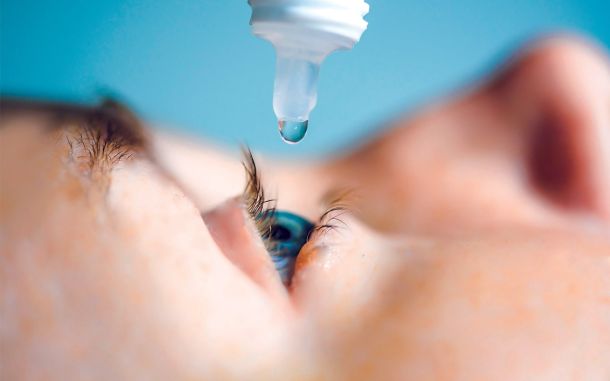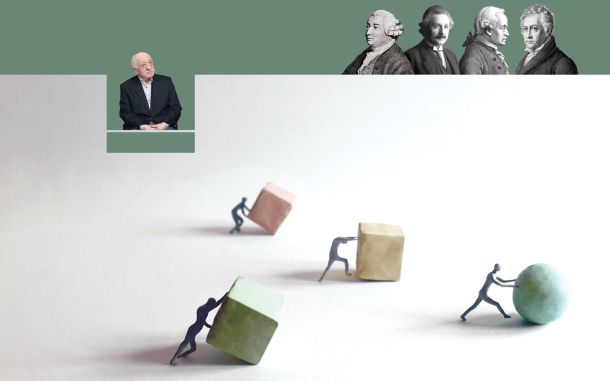Analyzing Drug Formulations and Halal Status of a Drug (1)

In This Article
-
Medicines consist of numerous ingredients, encompassing both active and inactive components that necessitate careful consideration when discussing the halal status of a drug.
-
Establishing a clear target product profile is crucial for ensuring the efficacy and focus of the formulation process. This profile typically encompasses the chosen route of administration, specific dosage form and size, any unique delivery requirements, as well as parameters related to the pharmaceutical appearance.
-
A multitude of drug formulations are employed, encompassing various inactive ingredients and containers, which vary based on the chemical properties of the active ingredient and the chosen route of administration. Considering the diverse array of active and inactive ingredients, as well as the containers used, is essential when addressing the halal status of a drug.
Halal is an Arabic word that means “lawful or permitted.” It is a term used in the Islamic religion in contrast with the word haram which means “unlawful or not allowed.” While these terms refer to much more than just dietary practices and indicate which life practices are allowed or not allowed for those who practice Islam, they are most often used for food and drinks. Depending on their formulations, medications, too, need to be evaluated for their halal compliance.
Medicines consist of numerous ingredients, encompassing both active and inactive components that necessitate careful consideration when discussing the halal status of a drug. Thus, it becomes imperative to understand the composition of medicinal ingredients and the intricacies involved in drug formulation before assessing their halal compliance. This article delves into an exploration of drug ingredients and formulations, while the subsequent article in the next issue will address the potential implications of these factors on the halal status of medicines.
Pharmaceutical formulation
A pharmaceutical formulation refers to the combination of an active pharmaceutical ingredient and various inactive components, culminating in the production of the final medicinal product. After undergoing various processes, the active drug is combined with other components, with careful consideration given to factors such as particle size, polymorphism, pH, and chemical solubility. Through evaluation of these chemical properties, the final beneficial medicinal product is meticulously crafted. Equally important is the design, development, and validation of the chosen drug product to guarantee its safety, effectiveness, and consistent delivery of the intended therapeutic benefits. Prudent selections of appropriate ingredients, dosage forms, manufacturing techniques, and packaging are crucial for optimizing the drug's properties and ensuring its long-term stability.
The active ingredient represents the primary chemical component responsible for the desired therapeutic effect. Each inactive ingredient within the formulation serves a specific purpose, ensuring optimal product performance and compliance. Any additional ingredient not integral to the drug formulation is strictly excluded. Consequently, each ingredient present serves a necessary function. Various types of drugs exist, and common inactive ingredients in tablet formulations, for instance, encompass diluents, binders, disintegrants, lubricants, glidants, colorants, and specialized additives that can modulate drug release or facilitate absorption. Among these, diluents, binders, disintegrants, and lubricants are prevalent in tablet formulations and fulfill the roles implied by their names. An effective drug formulation must be both manufacturable and chemically and physically stable throughout the manufacturing process and the product's shelf life. It should contain a precise dosage of the active pharmaceutical ingredient that can be easily absorbed by the human body. Moreover, it must adhere to numerous quality standards and specific requirements to guarantee both efficacy and safety. Additionally, the cost-effectiveness of each added ingredient should also be taken into consideration. Establishing a clear target product profile is crucial for ensuring the efficacy and focus of the formulation process. This profile typically encompasses the chosen route of administration, specific dosage form and size, any unique delivery requirements, as well as parameters related to the pharmaceutical appearance. Factors that influence the target product profile often include existing competing drugs in the market and the characteristics of the target patient population. For instance, pediatric formulations might necessitate the development of chewable tablets or suspensions. Moreover, individual circumstances, such as certain patients being unable to take the drug orally, may require alternative modes of administration. The formulation development process involves several stages, each playing a crucial role in the successful development of a drug product:
- Pre-formulation studies: This step entails the thorough analysis of a drug's physical, chemical, and mechanical attributes to determine the optimal ingredients for its preparation. These studies evaluate the chemical properties of the drug substance, such as solubility, stability, and compatibility with other excipients. The results from pre-formulation studies help in formulation design and evaluation, which are in the second stage.
- Formulation design and evaluation: This is the process of selecting the appropriate dosage form and excipients for the drug substance. The dosage form can be solid, liquid, semisolid, or dispersion depending on the physical and chemical properties of the drug and the target patient population. The ingredients are selected based on their compatibility with the drug substance, their function in the formulation, and their safety profile. The particle size, polymorphism, pH, and solubility of the ingredients can influence the activity of a drug. The drug must be combined with inactive ingredients by a method that ensures that the quantity of drug is consistent in each dosageunit, for example in each tablet. The dosage should have a uniform appearance, with an acceptable taste, tablet hardness, and capsule disintegration and even color.
- Manufacturing and process development: Process development is the optimization of the manufacturing process to ensure consistent quality, yield, and purity of the drug product. The manufacturing process is designed to ensure that the drug product meets the required specifications and is produced in compliance with regulatory requirements. The appropriate scale of the manufacturing process needs to be consistent with the needs of pre-clinical, clinical, and commercial requirements for the drug product.
- Analytical development and characterization: Analytical methods must be developed to ensure that the drug product meets the identity, purity, and potency specifications and requirements. The purity and potency of a drug product are measured and residual water, critical excipient levels and other impurities, drug dissolution or release, pH, osmolarity, appearance, particle size, and other critical quality attributes are also tested.
- Stability and shelf-life: Stability testing is a critical aspect of the formulation development process. It ensures that the drug product maintains its quality and efficacy over time because the drugs are stored at pharmacies and stores for long periods of time. Pharmaceutical stability testing encompasses the storage of the drug product under various environmental conditions, including temperature, humidity, and light, while monitoring its physical and chemical properties over a period. The data obtained from these tests aids in establishing the optimal storage conditions and determining the shelf-life of the drug product. The drug formulation is also influenced by the chosen route of administration, which can vary significantly. With various routes of administration available, the formulations may undergo modifications accordingly.
Enteral formulations: Oral drugs are normally taken as tablets or capsules. The active drug must exhibit controlled solubility in aqueous solutions, with the dissolution process being significantly influenced by factors such as particle size and crystal form. It's important to note that fast dissolution rates are not always optimal. For instance, slower dissolution rates can extend the duration of action or prevent initial high plasma levels, serving specific therapeutic objectives. A tablet is usually a compressed preparation that contains:
- 5-10% of the drug (active substance)
- 80% of fillers, disintegrants, lubricants, glidants, and binders
- 10% of compounds which ensure easy disintegration, disaggregation, and dissolution of the tablet in the stomachor the intestine.
Formulation studies revolve around drug preparation that is both stable and well-tolerated by patients. For orally administered drugs, this usually involves incorporating the drug into a tablet or a capsule. It is important to make the distinction that a tablet contains a variety of other potentially inert substances apart from the drug itself, and studies have to be carried out to ensure that the encapsulated drug is compatible with these other substances in a way that does not cause direct or indirect harm to the patient.
The dissolution time of a tablet or capsule can be adjusted to achieve either rapid absorption or sustained release. Special coatings can render the tablet resistant to stomach acids, allowing the drug to disintegrate only in the duodenum, jejunum, or colon due to enzymatic action or an alkaline pH. Pills can be coated with sugar, varnish, or wax to disguise the taste. There are other forms of oral drugs. A capsule is a gelatinous envelope enclosing the active substance. Capsules can be designed to remain intact for some hours after ingestion in order to delay absorption. They may also contain a mixture of slow and fast release particles to produce rapid and sustained absorption in the same dose.
There are a number of methods by which tablets and capsules can be modified in order to allow for sustained release of the active compound as it moves through the digestive tract. One of the most common methods is to embed the active ingredient in an insoluble porous matrix, such that the dissolving drug must make its way out of the matrix before it can be absorbed. In other sustained release formulations, the matrix swells to form a gel through which the drug exits.
Another method by which sustained release is achieved is through an osmotic controlled-release oral delivery system, where the active compound is encased in a water-permeable membrane with a laser drilled hole at one end. As water passes through the membrane the drug is pushed out through the hole and into the digestive tract where it can be absorbed.
Another category of drugs, known as parenteral formulations or injectable formulations, is administered via various routes such as intravenous (into the vein), subcutaneous (under the skin), intramuscular (into the muscles), and intra-articular (into the joints). These drugs are typically stored in liquid form, while unstable drugs are stored in lyophilized form. Liquid drugs are stored in vials, intravenous bags, ampoules, cartridges, and prefilled syringes. As with solid formulations, liquid formulations combine the drug product with a variety of compounds to ensure a stable active medication following storage. These include solubilizers, stabilizers, buffers, tonicity modifiers, bulking agents, viscosity enhancers/reducers, surfactants, chelating agents, and adjuvants.
Another form of the parenteral formulation is lyophilized drugs. Lyophilized drugs are stored in vials, cartridges, dual chamber syringes, and prefilled mixing systems. Lyophilization or freeze drying, is a process that removes water from a liquid drug creating a solid powder or cake. The lyophilized product is stable for extended periods of time and could allow storage at higher temperatures. In protein formulations, stabilizers are added to replace the water and preserve the structure of the molecule. Before administration, a lyophilized drug is reconstituted as a liquid before being administered. This is done by combining a liquid diluent with the freeze-dried powder, mixing, then injecting. Reconstitution often necessitates a dedicated system for mixing and administering the drug accurately. Drugs administered via the skin are commonly used in topical formulations. Some options for topical formulations include the following:
Cream: Emulsion of oil and water in approximately equal proportions. Penetrates stratum corneum outer layers of skin well.
Ointment: Combines oil (80%) and water (20%). It makes an effective barrier against moisture loss.
Gel: Liquefies upon contact with the skin.
Paste: Combines three agents - oil, water, and powder; an ointment in which a powder is suspended.
Powder: A finely subdivided solid substance.
Formulated drugs, conversely, are stored within container closure systems for prolonged durations. These systems encompass blisters, bottles, vials, ampules, syringes, and cartridges. Containers can be crafted from diverse materials such as glass, plastic, and metal, accommodating drugs in solid, liquid, or gas form. It is crucial to assess the possibility of any undesirable interactions between the formulation and its container. For example, when a plastic container is utilized, evaluations are conducted to determine whether any of the ingredients become adsorbed onto the plastic surface and whether plasticizers, lubricants, pigments, or stabilizers leach out from the container into the preparation. Even the adhesives used for container labels require testing to verify that they do not permeate the plastic container and affect the preparation. While the chemical properties of the ingredients remain pivotal in drug development, it's crucial to recognize that containers can also influence these properties. Therefore, the selection of appropriate containers for each drug is paramount. Thus, assessing the halal status of a drug requires consideration not only of the active and inactive ingredients but also of the containers.
In conclusion, a multitude of drug formulations are employed, encompassing various inactive ingredients and containers, which vary based on the chemical properties of the active ingredient and the chosen route of administration. Considering the diverse array of active and inactive ingredients, as well as the containers used, is essential when addressing the halal status of a drug.
References
- https://en.wikipedia.org/wiki/Pharmaceutical_formulation
- https://www.ncbi.nlm.nih.gov/books/NBK562239/ Pharmaceutical Formulation Shanta Afrin; Vikas Gupta.
- https://ascendiapharma.com/newsroom/2021/11/10/formulation-development
- https://law.resource.org/pub/my/ibr/ms.2424.2012.pdf
- https://www.emerald.com/insight/content/doi/10.1108/JIMA-06-2021-0192/full/html#ref058








